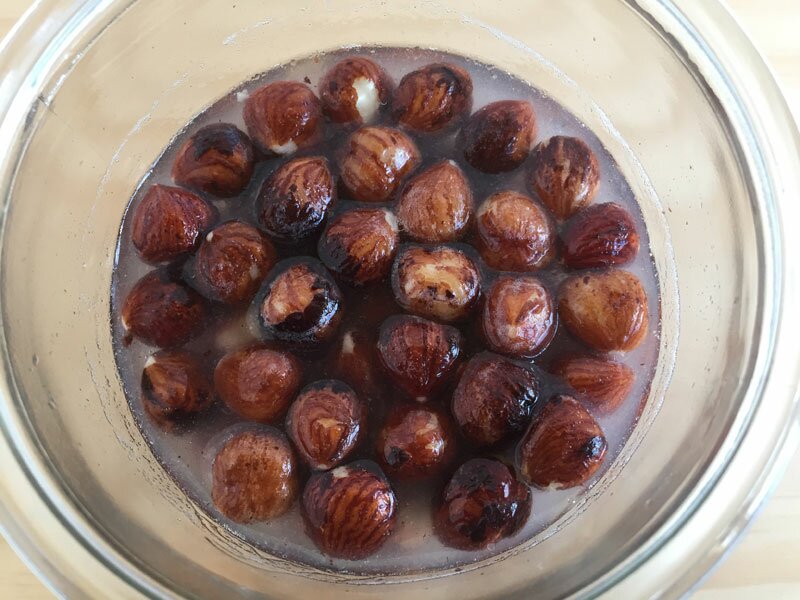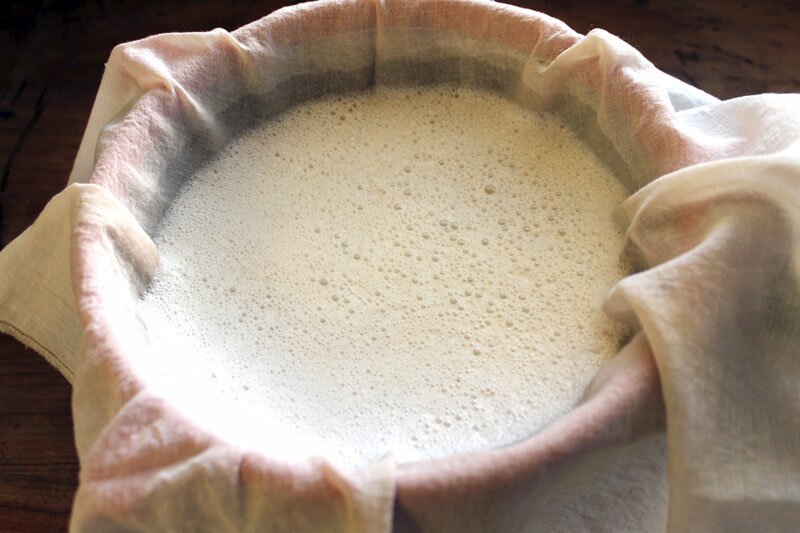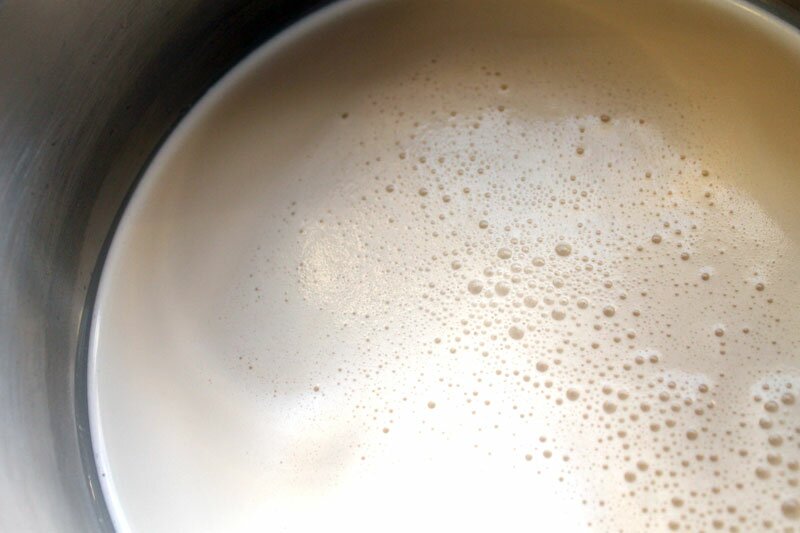It’s been 6 months since I wrote about how, and why, I quit milk. I’ve actually ended up eschewing dairy completely, except for the odd restaurant or takeaway curry. Oh, and I still occasionally buy a wedge of Castello cheese – there will always be a place in my stomach for Castello cheese! Given that I’ve been madly in love with all things dairy my whole life, I still can’t quite believe I’ve dropped it completely from my diet. But actually, in spite of a horrible withdrawal period which lasted a few weeks, being dairy-free has been surprisingly easy and also rewarding for the fact that my eco-conscience feels a little clearer now.
Some of the dairy products I used to consume regularly I’ve simply stopped eating without finding anything to replace them. Now that I think about it, apart from the odd dollop of coconut cream when eating out, I don’t think I’ve had any whipped cream this year! The crazy thing is I don’t miss it either. But milk itself was such a staple in my diet that I would have crumbled if I hadn’t found a perfect substitute in homemade nut mylk¹.
Until very recently, I have been substituting cows’ milk with homemade almond mylk. In fact, I began writing this blog post with the title, “Homemade almond mylk”. However, when I got to the part where I wanted to list all the reasons why I love almond mylk, I decided I had better first check how eco-friendly almonds are, and… HORROR! …I learned that almonds and our growing love of almond mylk are really environmentally problematic 🙁 .
I learned that 82% of the world’s supply of almonds are grown in California, US. I also learned that almond trees are VERY thirsty trees, needing 5L of water to produce 1 almond. Having said that, it takes 100L of water to produce 100mL of cows’ milk, but the problem with almonds is that they are grown intensively in (mostly) one location; namely California, a location which suffers frequent off-the-chart droughts and major water shortages. Almond farmers cope by pumping water from aquifers hundreds of metres below ground. Eeek! And this is not to mention the suffering of bees as part of the almond-growing process!² Needless to say I immediately resolved to find a more ethical, environmentally friendly nut, and I am relieved and happy to say that I have found one 😀 . Yesterday morning I made my very first batch of homemade HAZELNUT mylk.
Hazelnuts are grown in New Zealand! They can be grown sustainably on sloping land and on marginal soils not suitable for other crops. They can reduce and/or prevent erosion. They are drought hardy, and require minimal maintenance once established. I have ordered my first bulk batch of organic and affordable hazelnuts from a sustainable family farm in the South Island. I will let you know how they go, but in the meantime…
…I thought you might be interested to learn about making your own hazelnut mylk. Hazelnut mylk certainly tastes like hazelnuts. Sorry to be so obvious, but my husband made that comment when I gave him some to try yesterday as he is now quite used to the taste of almond mylk. So I thought I would just warn you of that fact in case you hate the taste of hazelnuts! I have decided my family and I will just have to get used to the taste, as there are simply too many reasons to choose hazelnuts over other, perhaps more mild flavoured, nuts.
The quantities and proportions I list below are really flexible because pretty much however many hazelnuts and however much water you use, you still end up with hazelnut mylk! Proportions will just affect how creamy or watery the resulting mylk will be. I’m trying to be pretty frugal with my nuts so I use a bit more water than some might, and I also use the nut pulp for a second time so that I end up with a first batch that is creamier for our porridge, and a second batch that is watery for my tea.

To make hazelnut mylk (and probably any other nut mylk I expect), you should pre-soak your nuts. I put 2/3cup of hazelnuts in a jar with a teaspoon of unrefined sea salt and enough filtered water that they are covered by at least an inch (well, they float so I guess you’re looking for at least an inch of water underneath!). They can be left to soak out at room temperature for a day, or in a fridge for a couple of days, so that you can see they have swollen a bit. When you are ready to make your mylk, rinse and drain the hazelnuts and put them in a blender along with 2 cups of water. Pulse a few times, and then whizz for a few minutes. You will see your mylk appear before your eyes!!
Strain the mylk to remove the pulp by using either a nut milk bag, or I just drape a piece of muslin over a sieve. Squeeze the last few drops of mylk out and then put the nut pulp back in the blender with another 4 cups of water if you want to make a more watery second batch of mylk. Repeat the above process again. Homemade nut mylk keeps in the fridge for only a few days. You can taste and smell when it’s gone bad. I believe it freezes and thaws well, but I’ve never got around to trying that because it’s so quick and easy to make that I don’t mind making it fresh each time. You can use it in exactly the same way you would use cows’ milk.

I’ll just add that when I first switched to buying (organic) nuts in bulk, I really baulked at the cost of them; it’s quite scary! But I had to remind myself that I was making around 1L of mylk from 2/3cup of nuts so the actual cost was comparable, if not a little cheaper, than buying organic milk. I never buy cartons of nut milk because they contain layers of polyethylene and aluminium, they are not recyclable in most parts of New Zealand, and they often contain extra ingredients that I’m not really interested in drinking. Now, we are finding that our recycling bin is almost empty each week. I’d never really considered how much plastic waste leaving our household was a by-product of milk drinking. I really recommend homemade nut mylk to anyone – not allergic to nuts! – as an easy first step to make towards zero-waste or low-waste living.
And of course, now you know why hazelnuts are so much more ethical than almonds, I encourage you to switch from almond meal to hazelnut meal in your gluten-free baking from now on, as I will too!
References, for your interest:
1. Definition of ‘mylk’
2. The Guardian | “Almond milk: quite good for you, very bad for the planet”
3. What are the most eco-friendly nuts?
